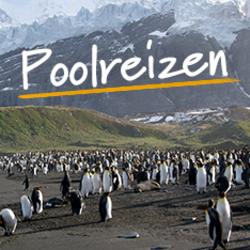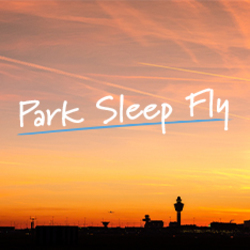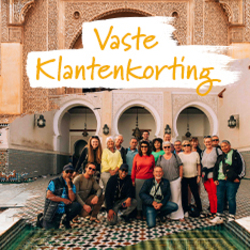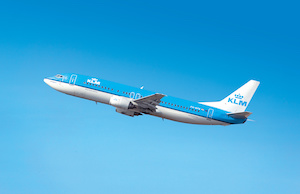Activities
- Walking & Trekking
- Point-to-Point
- Enjoy a circular trek via the quieter Gokyo Valley. Stay beside the azure blue glacial lake at Gokyo. Cross the Ngozumpo Glacier and conquer the Cho La Pass. Ascend Kala Pattar and Gokyo Ri for views of Everest and other Himalayan giants. Trek to Everest Base Camp and stand at the foot of the highest mountain on Earth
Food
-
1
Start Kathmandu.
The group flights are scheduled to arrive into Kathmandu this afternoon. Free airport transfers are available for any flight, provided you have supplied your flight details to Exodus in advance and requested a transfer. A representative will meet you at the airport and you will be transferred to the hotel. There are no activities planned today so if making your own travel arrangements, you can arrive at any time. Upon arrival to the hotel please look out for a noticeboard in the reception area with details of where and when to meet for your welcome/trek briefing this evening. There is an Exodus desk in the hotel lobby should you require any assistance.Royal Singi Hotel (or similar)
-
2
Fly to Lukla (2800m); trek to Phakding
We fly to the mountain airstrip of Lukla (2,800m), and set off on the first short leg of our trek, heading northwards up the valley of the Dudh Kosi (or 'Milk River'). We descend from the small plateau down into the forested valley. The trail crosses several tributary streams and we have some tantalising views before reaching the small settlement of Phakding, where we will spend our first night.Teahouse (sleeping altitude 2650m)
-
3
Follow the Dudh Kosi and ascend to Namche Bazaar.
Heading out of Phakding we follow the Dudh Kosi northwards. This day's walk takes us through magnificent forests with glimpses of the mountains ahead. We cross the river several times by bridges as we pass through the villages of Benkar, Monzo and Jorsale. A final bridge brings us to the foot of the steep climb to Namche. Halfway up this ascent we may get our first glimpse, cloud-permitting, of the summit of Everest appearing majestically behind the great ridge of Nuptse-Lhotse. A last 300m of climbing brings us to Namche Bazaar, the Sherpa capital and the main town in the area. Namche is a prosperous Sherpa town and an important trading centre. It has a weekly market on Friday afternoon and Saturday morning but the town bustle all day every day with trekkers, coffee shops, bakeries and stores selling all kinds of trekking and climbing gear as well as Tibetan souvenirs. Teahouse (sleeping altitude 3,440m)
-
4
Explore in and around Namche Bazaar; acclimatisation walk in the Thame Valley.
We spend today acclimatising to the altitude. If it’s a clear morning those who want can get up before breakfast and walk up to the National Park Museum for our first good view of Everest, Nuptse and Lhotse. After breakfast we have an easy acclimatisation walk into the Thame Valley, a quiet side valley on the way to Tibet. The trail climbs steeply out of Namche and then contours around the valley on an easy trail through beautiful forest. We return to Namche for lunch and in the afternoon there is time to explore the Sherpa capital or visit the Everest National Park Museum or the Sherpa Cultural Centre.Teahouse (sleeping altitude 3,400m)
-
5
Acclimatisation walk to Kunde and Khumjung; descend to Kyanjuma.
We climb steeply out of Namche to the Everest View Hotel. This spectacularly situated hotel has wonderful views of Everest and Ama Dablam and is an ideal place for a tea break. Continuing on, we trek to the villages of Kunde and Khumjung set below Khumbila, the rocky peak sacred to all Sherpas. In Kunde we can visit the Edmund Hillary hospital, and in Khumjung we can see the Edmund Hillary School. There should also be time to visit Khumjung monastery, where for a small donation we will be shown the only Yeti skull in the world! Descending to the main trail we spend the night at Kyanjuma.Teahouse (sleeping altitude 3,600m)
-
6
Cross the Mong La into the Gokyo Valley and trek to Dole.
At Kyanjuma we turn off the main trail and begin climbing to the Mong La, marked by a chorten on the top of a ridge at 3,972m. This ridge descends from Khumbila, the abode of the patron god of all Sherpas. From the ridge, the trail descends in a series of steep switchbacks towards the Dudh Kosi. At Phortse Tenga (3,600m) the trail starts to climb steeply out of the valley and we enter the rhododendron forests, which give way to juniper and conifers higher up the valley. We pass through kharkas, summer settlements used by the Sherpas to graze their yaks, before coming to Dole, where we have magnificent views of Kangtaiga and Tramserku.Teahouse (sleeping altitude 4,040m)
-
7
Continue to Machhermo.
A short walk today. From Dole the trail is steep in places as it passes through Lhabarma and Luza along the side of the valley, high above the river through scrub junipers until we cross the sandy spurs to Machhermo (4,410m). It was here in 1974 that a yeti was reported to have attacked a sherpa and killed three yaks! We should get to Machhermo by lunchtime and in the afternoon there is time for an acclimatisation walk up onto the ridge behind the lodge for amazing views of Tramserku.Teahouse (sleeping altitude 4,410m)
-
8
Trek to Gokyo Lake, a small settlement of lodges on the shores of a blue lake. Afternoon, optional walk up the hill behind camp for incredible views of the Ngozumpo Glacier.
We begin today by climbing a ridge for an excellent view down the valley to Kangtaiga and Tramserku and up the valley towards Cho Oyu (8,201m). The valley now widens as the trail passes through Pangkha then descends to the riverbank before beginning the steep climb on a narrow trail onto the terminal moraine of the Ngozumpo Glacier. We pass the first of the lakes at Gokyo, called Longpongo. We then follow the almost level trail past the second lake and on to the third lake and the walled meadows and lodges of Gokyo at 4,750m. Gokyo is a small settlement of lodges on the shores of a blue lake. Look out for Brahmany Ducks swimming in the lake. We have lunch in Gokyo and in the afternoon we can walk up the hill behind camp for incredible views of the Ngozumpo Glacier.Teahouse (sleeping altitude 4,750m)
-
9
Climb Gokyo Ri (5360m); afternoon trek to Dragnag.
A very early start this morning for the steep ascent of Gokyo Ri (5,360m), a small peak above Gokyo village. As we climb, the views become even more fantastic and from the top we can see four of the seven highest peaks in the Nepalese Himalaya: Cho Oyu, Everest, Lhotse and Makalu. Stretching out for miles below us is the longest glacier in Nepal - the Ngozumpo Glacier, which tumbles down from the slopes of Cho Oyu. One of the best all-round views in Nepal, the climb is well worth the effort. We return to Gokyo for lunch and then set off for Thangnak. The trail starts by climbing to the crest of the moraine overlooking the Ngozumpo Glacier. The route across the glacier is well marked with cairns but we need to take care as the path is narrow and there is ice underfoot in parts. The trail climbs up and down and takes us to the eastern side of the Gokyo Valley. We stay tonight at Tangnak (4,700m) at the foot of the Cho La Pass.Teahouse (sleeping altitude 4,700m)
-
10
Cross the Cho La (5420m) and enter the main Khumbu Valley; trek to Dzongla.
An early start for the very long day across the Cho La (5,420m). We climb up from Tangnak for about 90 minutes to a col. Ahead we can see the Cho La in the distance. We descend to a large boulder field, where we rest before tackling the climb to the pass. A new trail has been created up the Cho La with some metal chains and handrails but the old trail still exists - your leader will decide which trail is best to use depending on conditions on the day. The last two hours are very steep and rocky and involve some scrambling as we zig-zag up to the top. The upper part of the route can be covered in snow and ice, particularly after November and in spring. Finally we reach the glaciated top, from where there are excellent views including an unusual aspect of Ama Dablam. We need to take care on the descent as it’s steep and involves the crossing of a small glacier (usually snow-covered) which is fairly straightforward. After a scramble down onto the glacier, we follow a trail across the snow and down a rocky gully to the pastures below. The trail becomes more defined as we approach Dzongla, where we stay tonight.Teahouse (sleeping altitude 4,830m)
-
11
Continue the ascent to Lobuje.
An easier day ahead as leaving Dzongla we begin with a continuation of our descent. A short ascent brings us to the foot of Awi Peak, which we contour round on a wonderful high trail with great views of Chalotse and Tawoche across the valley. We finally descend to join the main trail again just below Lobuje. We spend the night at Lobuje (4,930m). The sunset on Nuptse from the ridge across from the lodge is not to be missed.Teahouse (sleeping altitude 4,930m)
-
12
A long day to visit Everest Base Camp. Overnight at Gorak Shep.
We are now surrounded by giant Himalayan peaks; Everest, Nuptse, Lingtren, Khumbutse and Pumori tower above us. Today is long and hard as we visit Everest Base Camp (5,364m). The trail from Lobuje climbs steadily by the side of the Khumbu Glacier, with some steep ups and downs on a rocky trail. It will take us about 3 hours to reach Gorak Shep (5,180m), a collection of lodges situated at the foot of Kala Pattar. After a short break and an early lunch, we fill our water bottles and make sure we have plenty of snacks (there are no lodges from here to Base Camp) and set off for Base Camp. The trail heads along the crest of the moraine at first with plenty of undulations, some of them quite steep. We then drop steeply down onto the Khumbu Glacier itself, where we get magnificent close-up views of the great Khumbu Icefall as it tumbles down from Everest. In the spring season we will see expedition teams as they prepare for an ascent. We retrace our steps to Gorak Shep for the night.Teahouse (sleeping altitude 5,184m)
-
13
Climb Kala Pattar (5545m) for classic views of Everest; descend to Pheriche.
Another long day as we ascend the small peak of Kala Pattar ('black rock') at 5,545m. It is a steep two-hour climb to the summit, but the effort is well worth it, as we appreciate the most magnificent view of the Khumbu glacier and above all a close-up sight of the world's highest mountain which the Nepalese call Sagarmatha - Head of the Waters and the Sherpas Chomolungma - Mother of the World. We return to Gorak Shep and descend past Lobuje to Pheriche (4,243m).Please note the exact order in which we trek up Kala Pattar and visit Everest Base Camp will depend on the weather and how the group is acclimatising. Both days are long and hard due to the high altitude.Teahouse (sleeping altitude 4,243m)
-
14
Trek to Thyangboche and visit the famous monastery.
We descend the Pheriche Valley with spectacular views of Ama Dablam. We join the main Imja Khola Valley, which we follow down to Pangboche with superb views looking back to the great ridge of Lhotse-Nuptse. Pangboche, at 3,985m is the highest permanent settlement on the approach to Everest. Dropping down to the rushing Imja Khola we then walk through rhododendron forests to Thyangboche. From here we have a fantastic panorama of Everest, Nuptse, Lhotse, and Ama Dablam. We stay here for the night and we can visit the famous monastery and if the weather is clear we can enjoy the fantastic sunset and sunrise.Teahouse (sleeping altitude 3,800m)
-
15
Trek back to Monzo via Kyanjuma and Namche.
We descend through the forest to the river at Phunki Tenga. Crossing a bridge we then climb up to Kyanjuma with great views of Ama Dablam. From here an easy trail contours around the hillsides back to Namche Bazaar, from where we descend to the river and retrace our steps to Monzo (2,815m).Teahouse (sleeping altitude 2,815m)
-
16
Return to Lukla.
We retrace our steps southwards with a final climb to the airstrip at Lukla.Teahouse (sleeping altitude 2,800m)
-
17
Fly to Kathmandu
We fly back to Kathmandu and transfer to our hotel. The rest of the day is at your leisure.Royal Singi Hotel (or similar)
-
18
Free day in Kathmandu.
Today is free for sightseeing in Kathmandu (it is also a spare day to allow for any delays in the flights to or from Lukla). You may wish to visit the monkey temple at Swayambunath, one of the largest Buddhist Stupas in the world at Boudhanath, or the most important Hindu temple in the valley at Pashupatinath. We offer a full range of sightseeing tours, which can be booked and paid for locally; please ask your leader for details. Or you can simply hire a taxi from outside of the hotel. The Thamel area is full of shops and restaurants and coffee shops for those who want a more relaxing day.Royal Singi Hotel (or similar)
-
19
End Kathmandu.
The tour ends after breakfast. The group flight is a day flight scheduled to depart in the morning. Those on the group flights or who have booked a transfer through Exodus will be transferred to the airport.






































